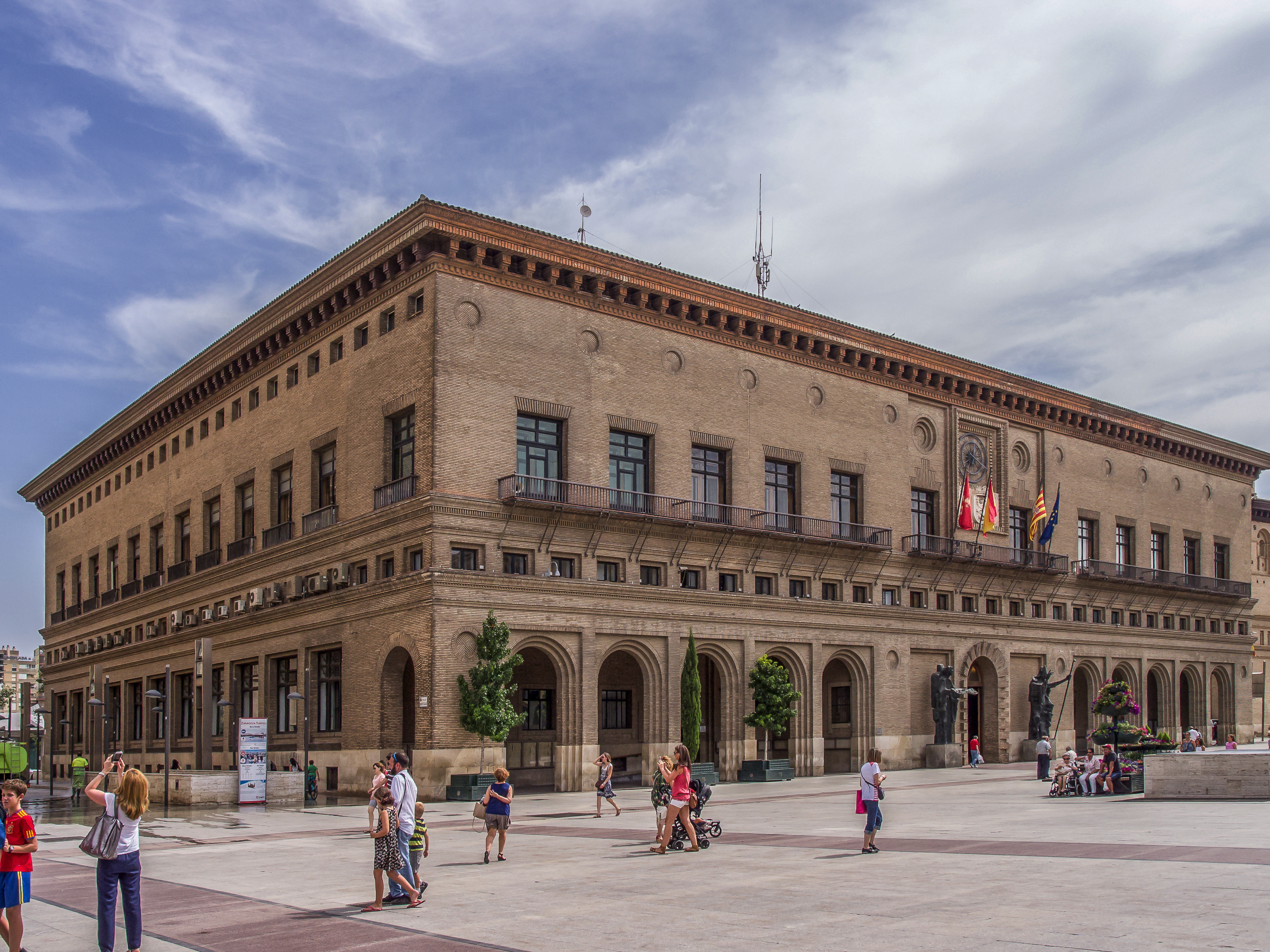Zaragoza City Hall on:
[Wikipedia]
[Google]
[Amazon]
 Zaragoza City Hall ( es, Casa consistorial de Zaragoza) is the seat of the city council in
Zaragoza City Hall ( es, Casa consistorial de Zaragoza) is the seat of the city council in
 Zaragoza City Hall ( es, Casa consistorial de Zaragoza) is the seat of the city council in
Zaragoza City Hall ( es, Casa consistorial de Zaragoza) is the seat of the city council in Zaragoza
Zaragoza, also known in English as Saragossa,''Encyclopædia Britannica'"Zaragoza (conventional Saragossa)" is the capital city of the Zaragoza Province and of the autonomous community of Aragon, Spain. It lies by the Ebro river and its tributari ...
, Aragon
Aragon ( , ; Spanish and an, Aragón ; ca, Aragó ) is an autonomous community in Spain, coextensive with the medieval Kingdom of Aragon. In northeastern Spain, the Aragonese autonomous community comprises three provinces (from north to sou ...
, Spain. It is located in the Plaza of Our Lady of the Pillar, and is built in the Renaissance Revival
Renaissance Revival architecture (sometimes referred to as "Neo-Renaissance") is a group of 19th century architectural revival styles which were neither Greek Revival nor Gothic Revival but which instead drew inspiration from a wide range o ...
style.
The city council was held from the Middle Ages in the Casas del Puente, named for their proximity to a bridge over the river Ebro
, name_etymology =
, image = Zaragoza shel.JPG
, image_size =
, image_caption = The Ebro River in Zaragoza
, map = SpainEbroBasin.png
, map_size =
, map_caption = The Ebro ...
. The buildings, which were indistinct from their neighbours, were demolished in the early 20th century. The council had held the Dominican Convent
The Order of Preachers ( la, Ordo Praedicatorum) abbreviated OP, also known as the Dominicans, is a Catholic mendicant order of Pontifical Right for men founded in Toulouse, France, by the Spanish priest, saint and mystic Dominic of ...
since 1837 due to laws of confiscation. It then based itself there from 1912, due to the deterioration of the previous site.
A competition was held, and the design by Alberto Acha, Mariano Nasarre and Ricardo Magdalena Gayán won in 1941. In 1945, the plan was set for the foundation and frame at a price of 5 million Spanish peseta
The peseta (, ),
* ca, pesseta, was the currency of Spain between 1868 and 2002. Along with the French franc, it was also a ''de facto'' currency used in Andorra (which had no national currency with legal tender).
Etymology
The name of th ...
s, and work began on 2 January 1946. Construction halted in 1951 due to exhausted funds, and remained untouched until 1954 when the mayor ordered the facade to be built for the Marian Congress due to be held in the city, at a cost of 2.4 million. The bill totalled 18 million when it opened on 6 September 1965. A reason for the costs and length of construction was that it was not built by large companies, but by guilds of master craftsmen.
The city hall is also used as an art gallery.
Reference
{{coord missing, Spain Bien de Interés Cultural landmarks in the Province of Zaragoza Buildings and structures in Zaragoza City and town halls in Spain Renaissance Revival architecture in Spain Buildings and structures completed in 1965 Brick buildings and structures